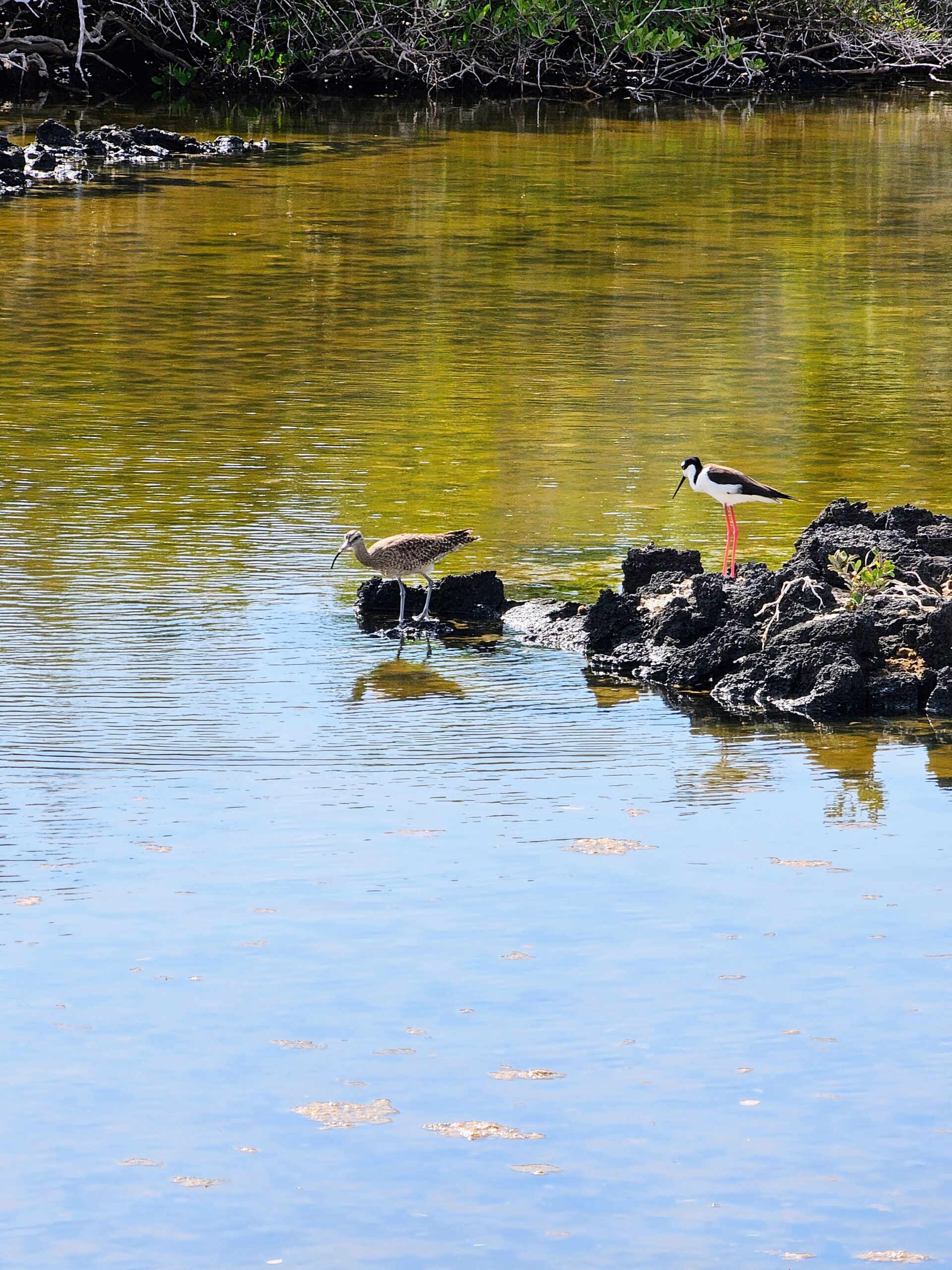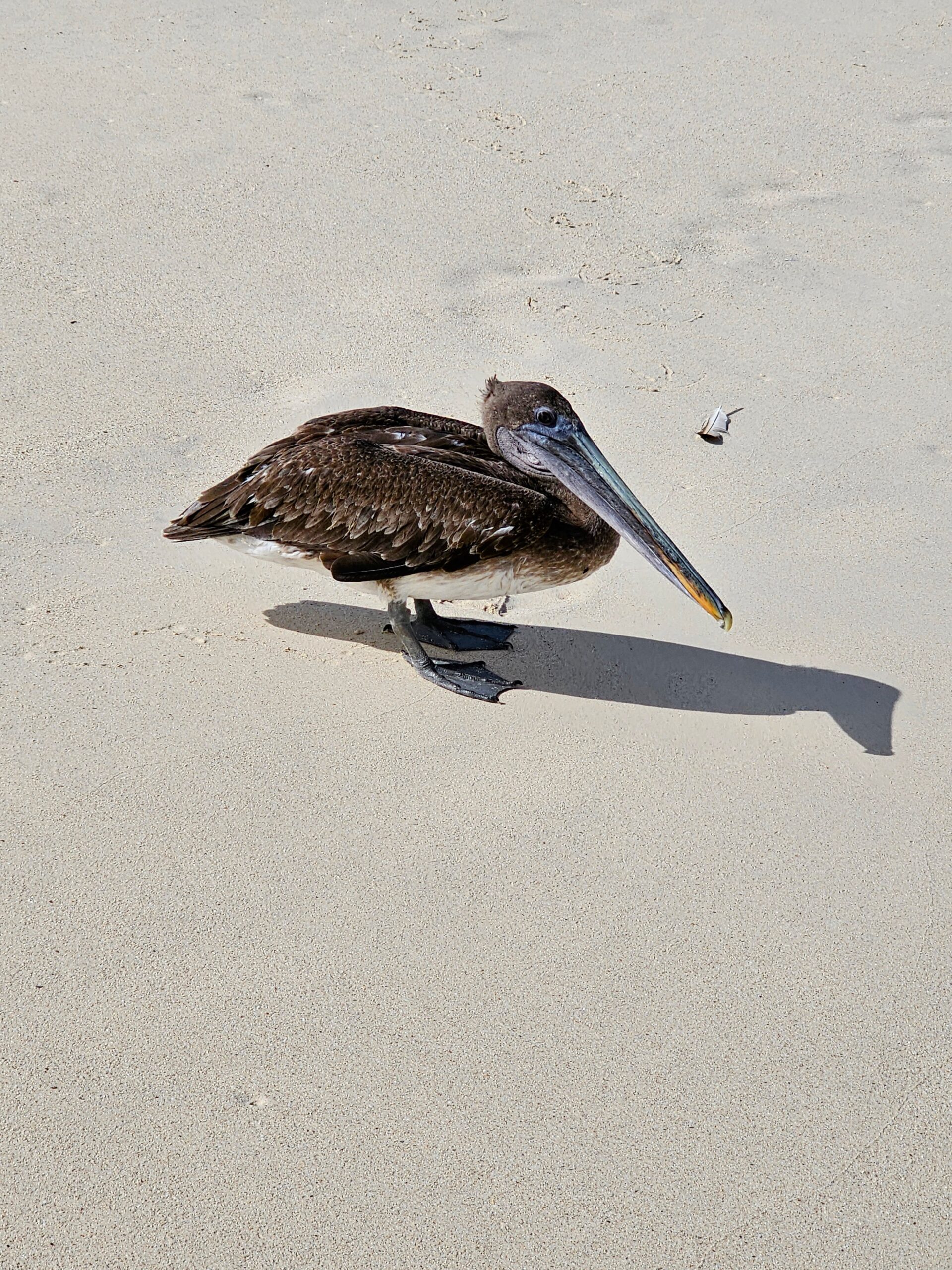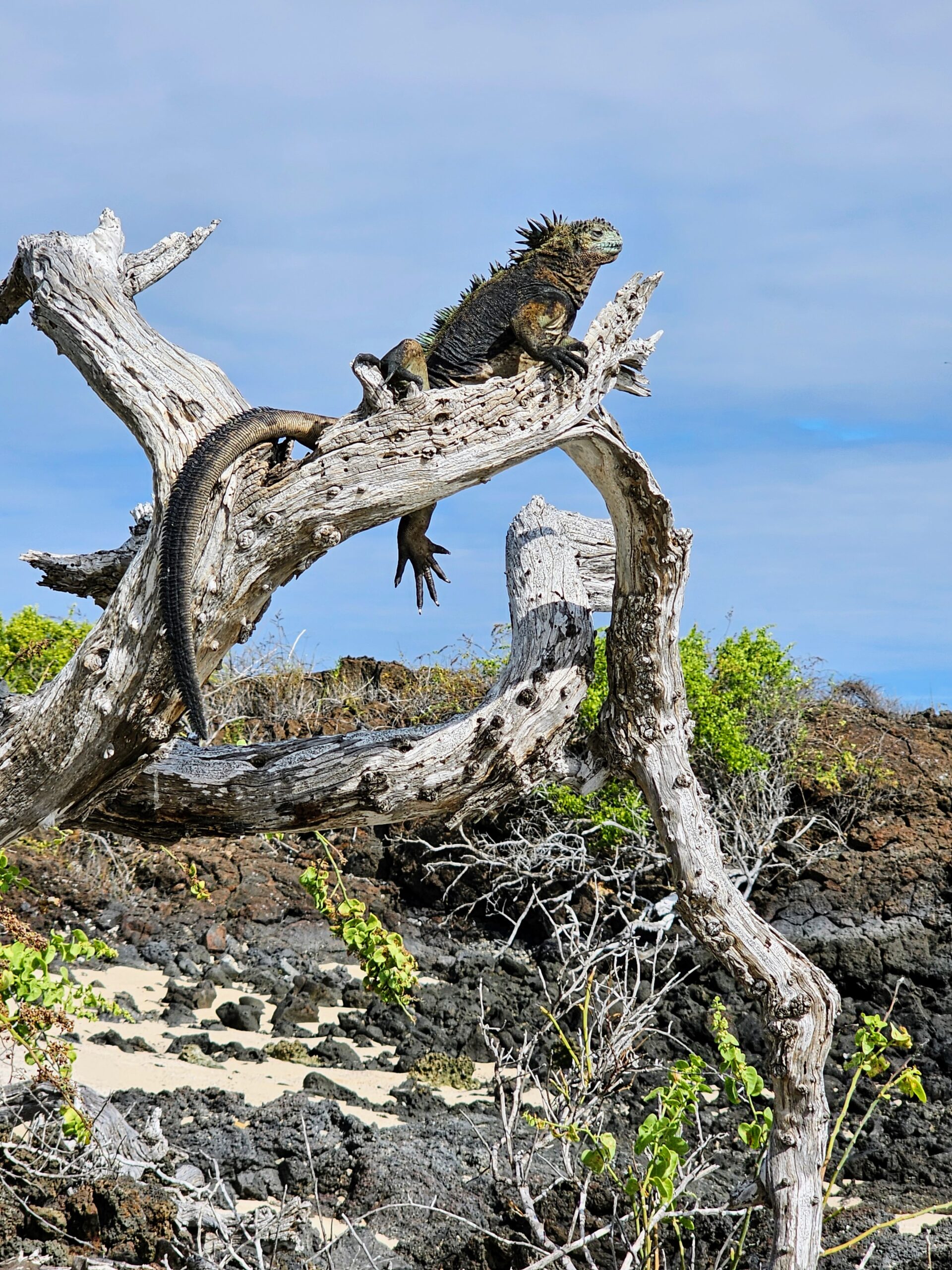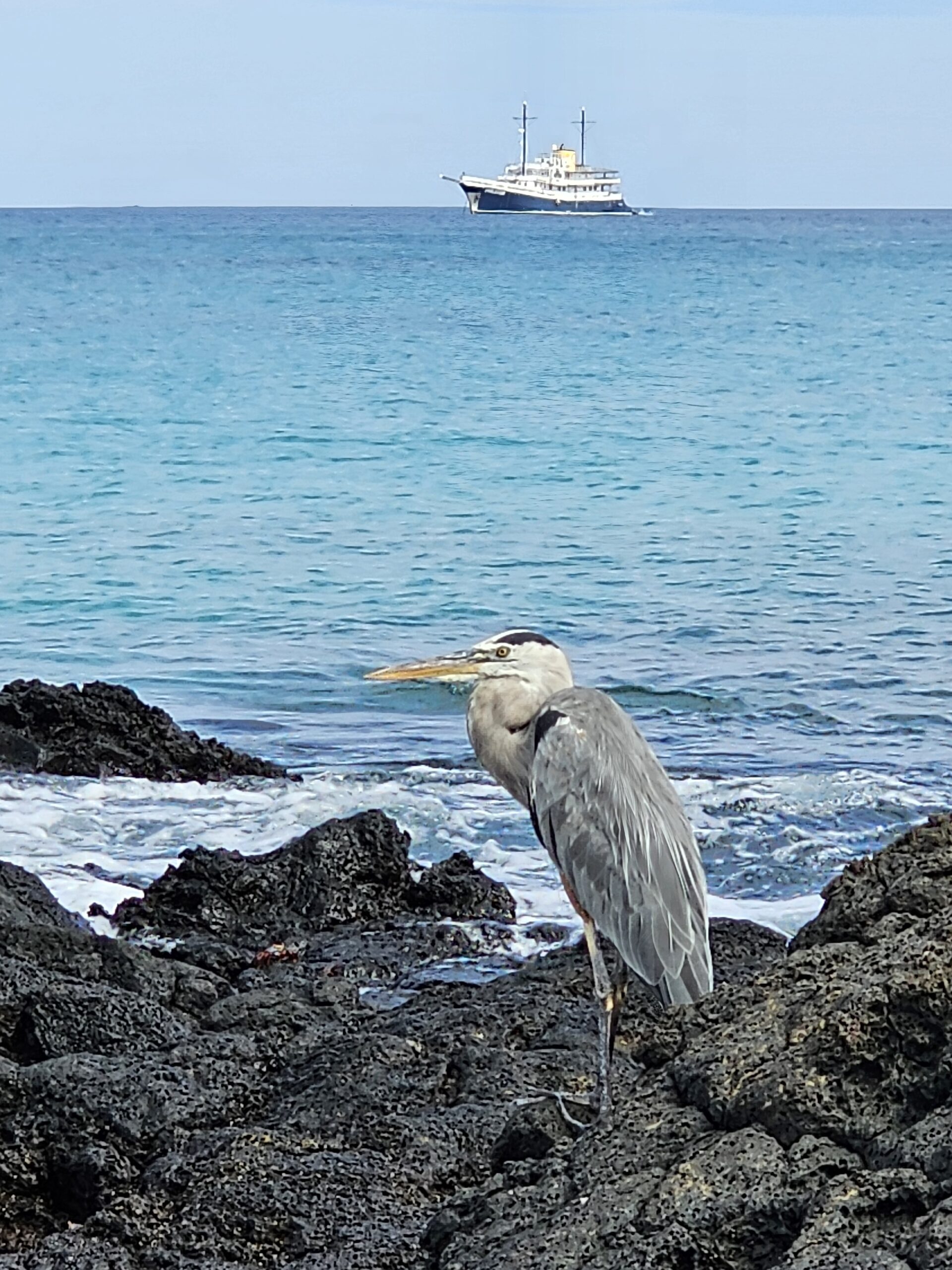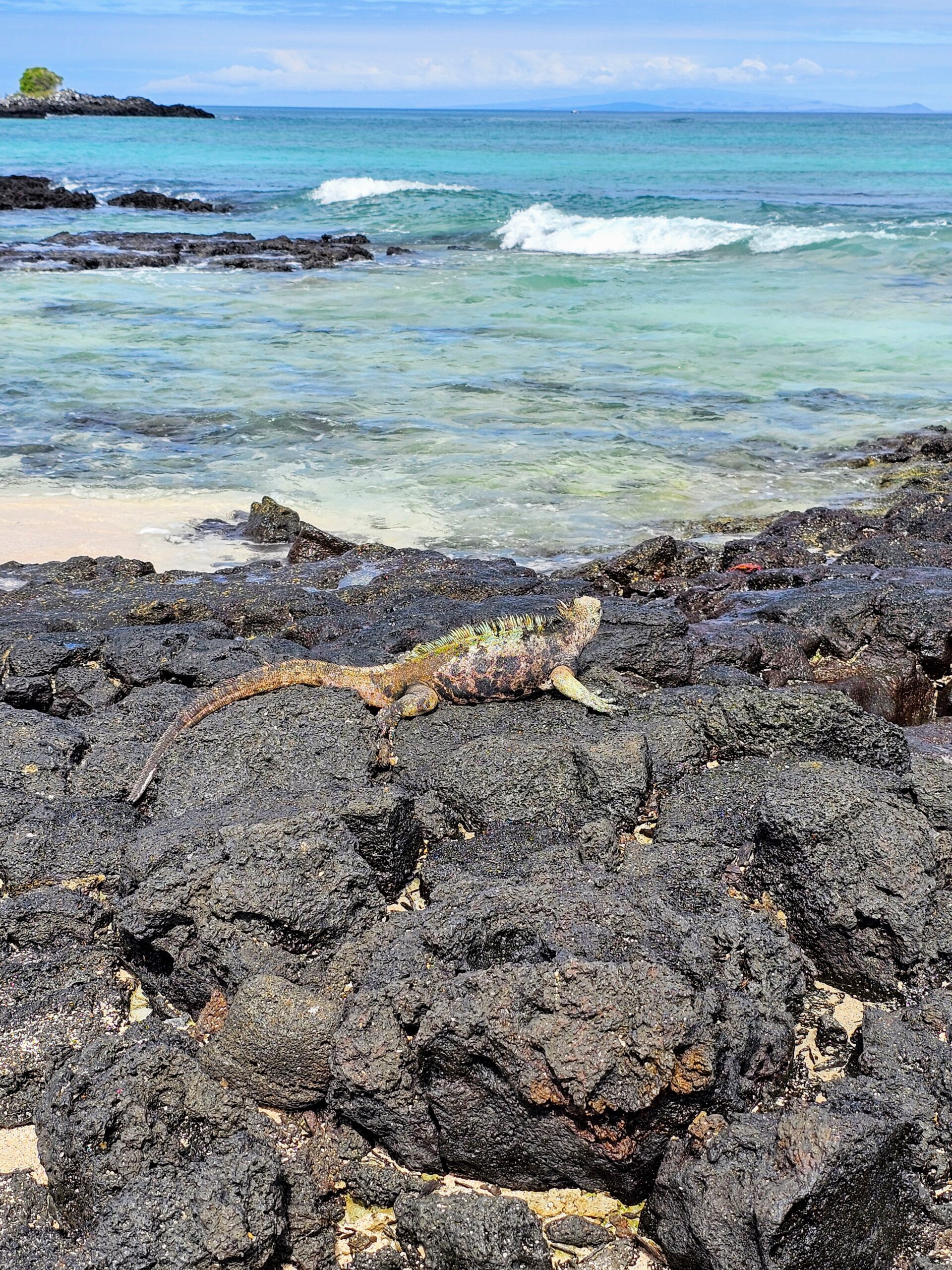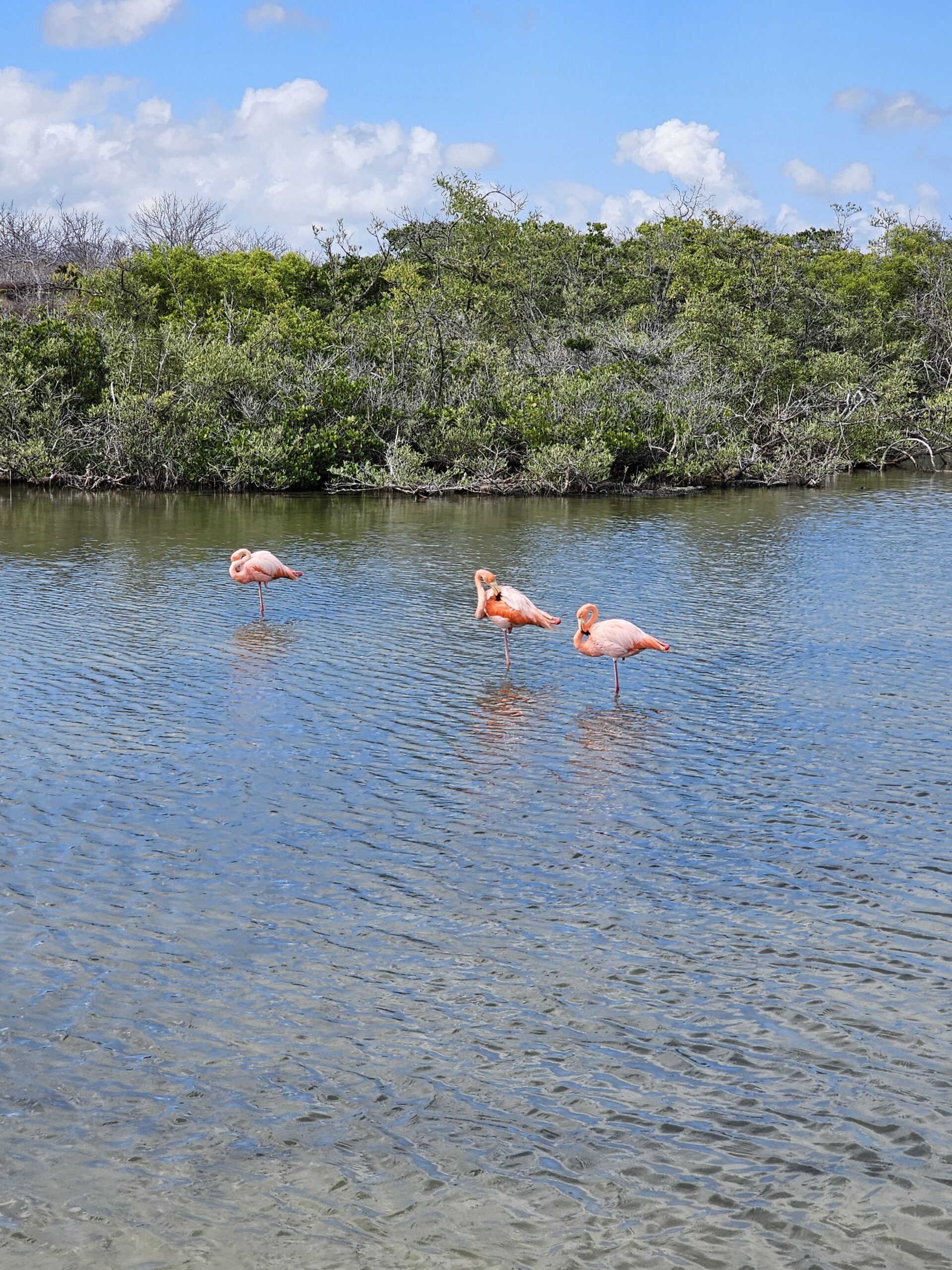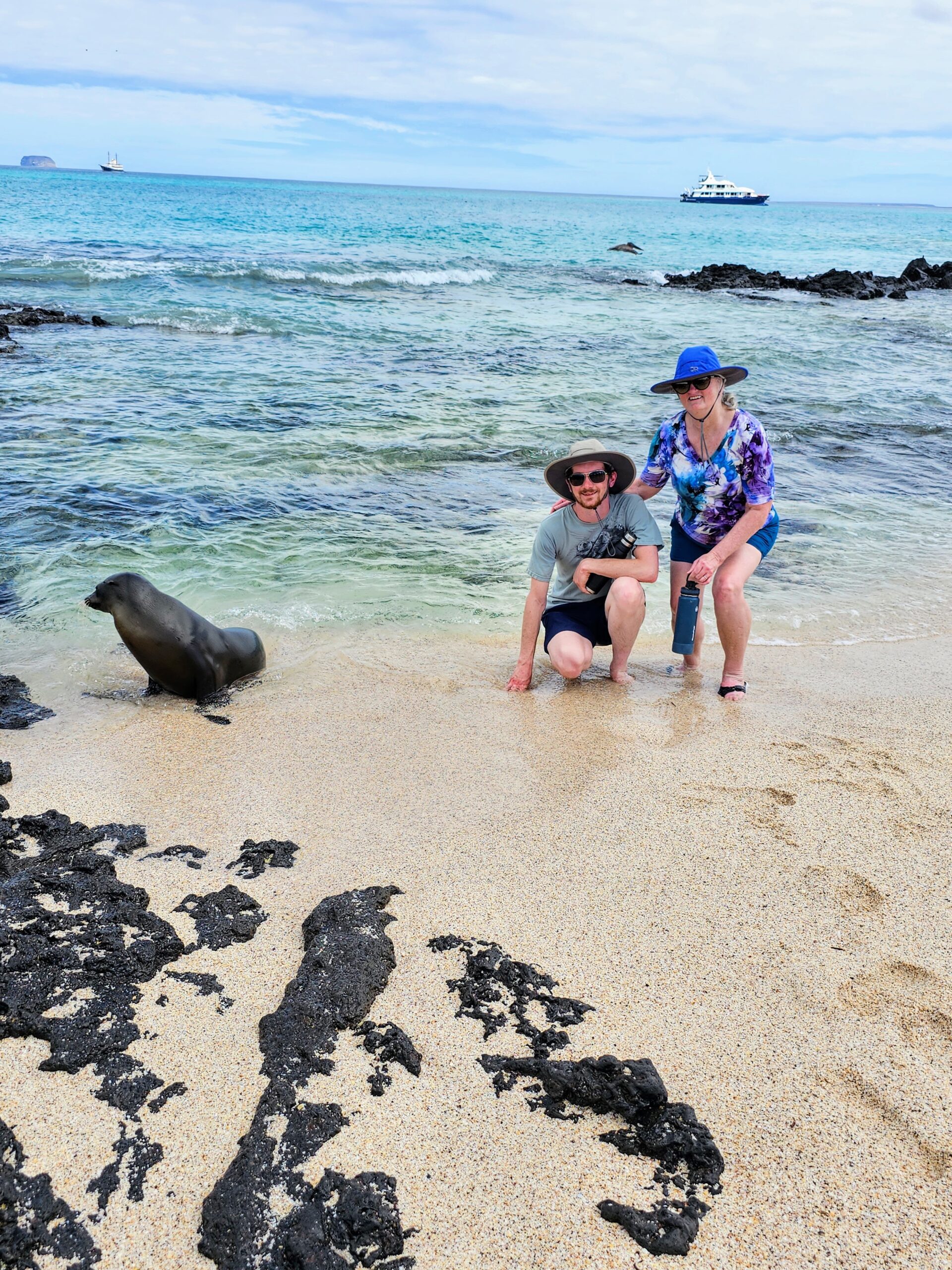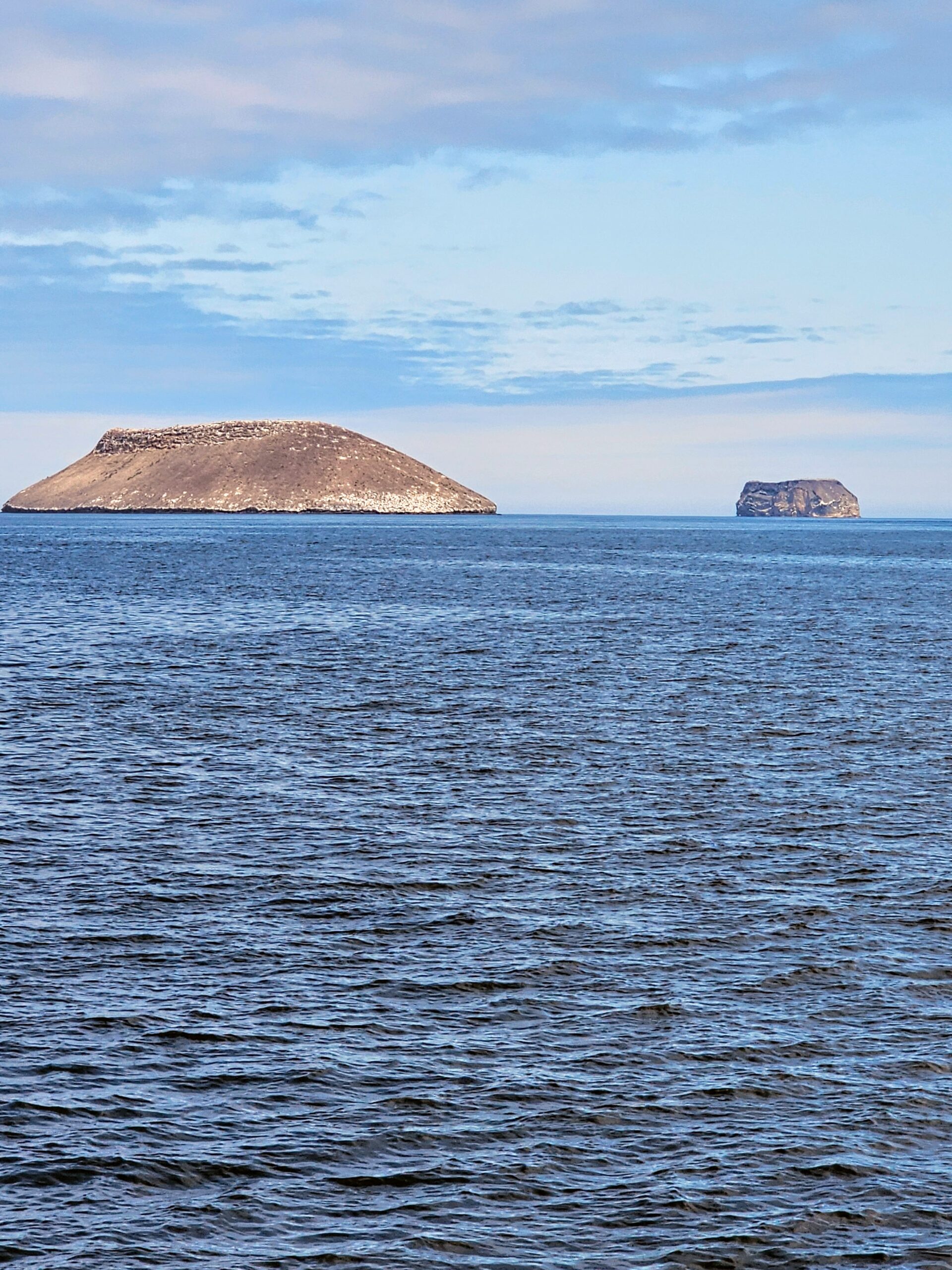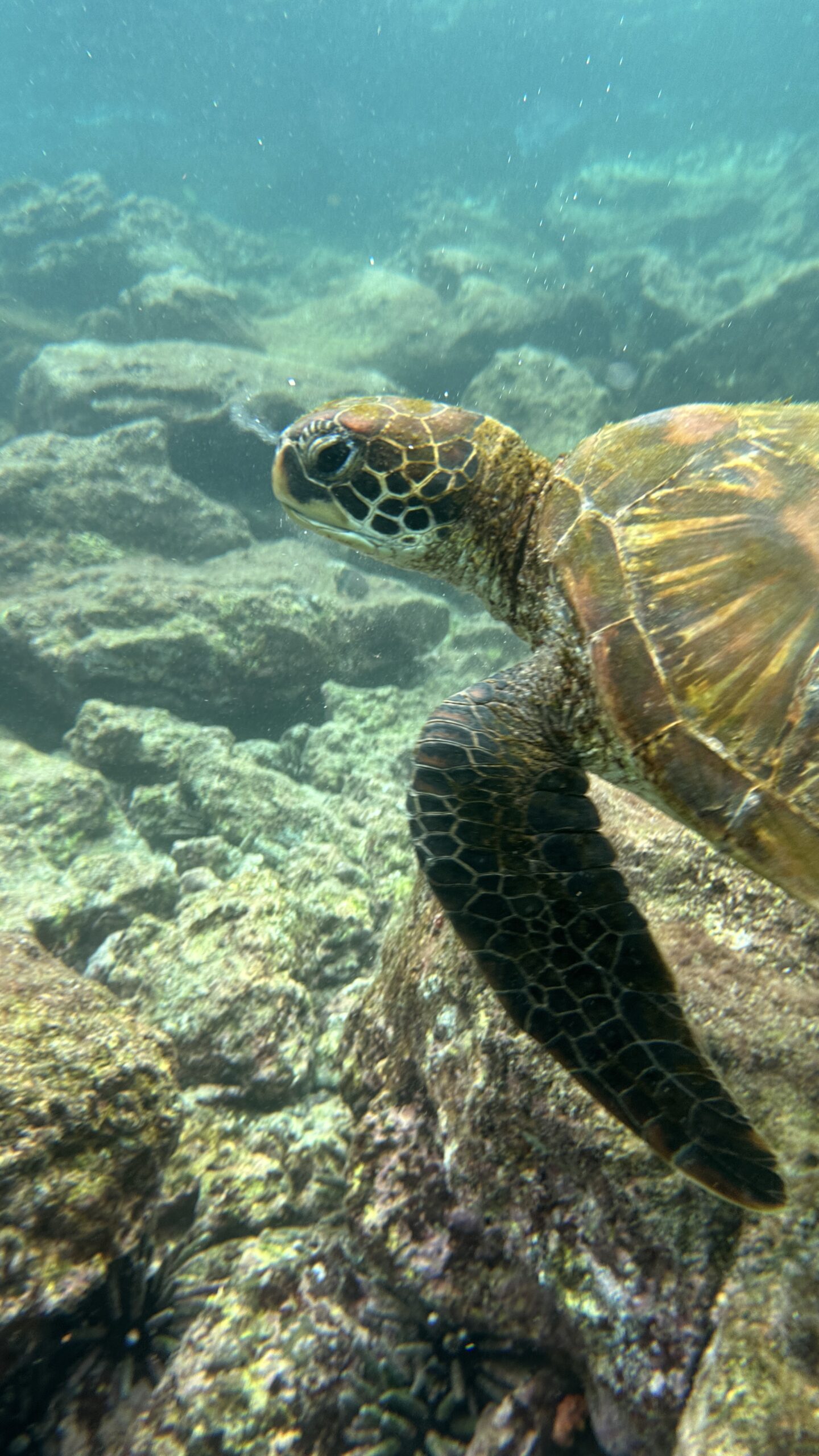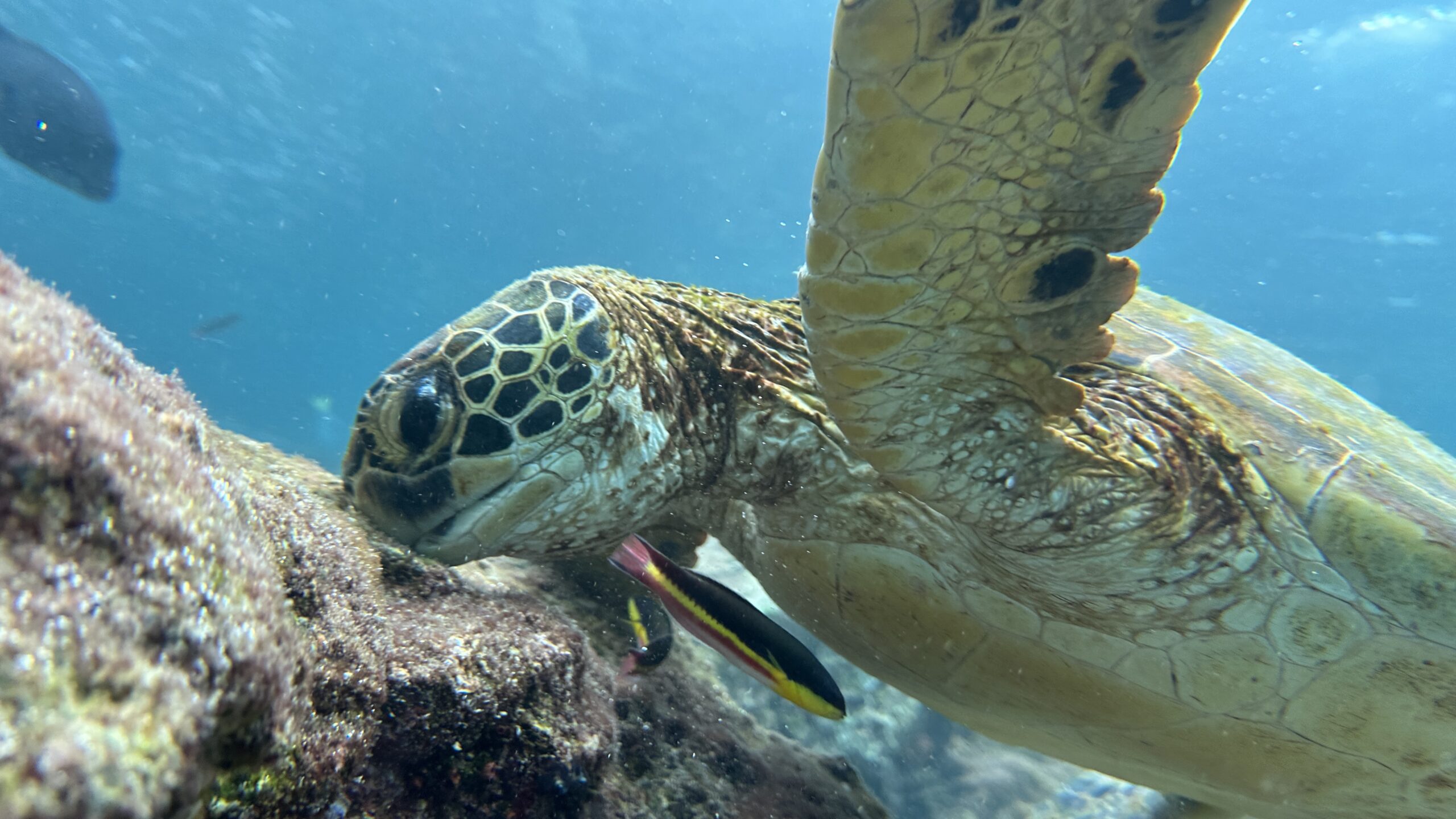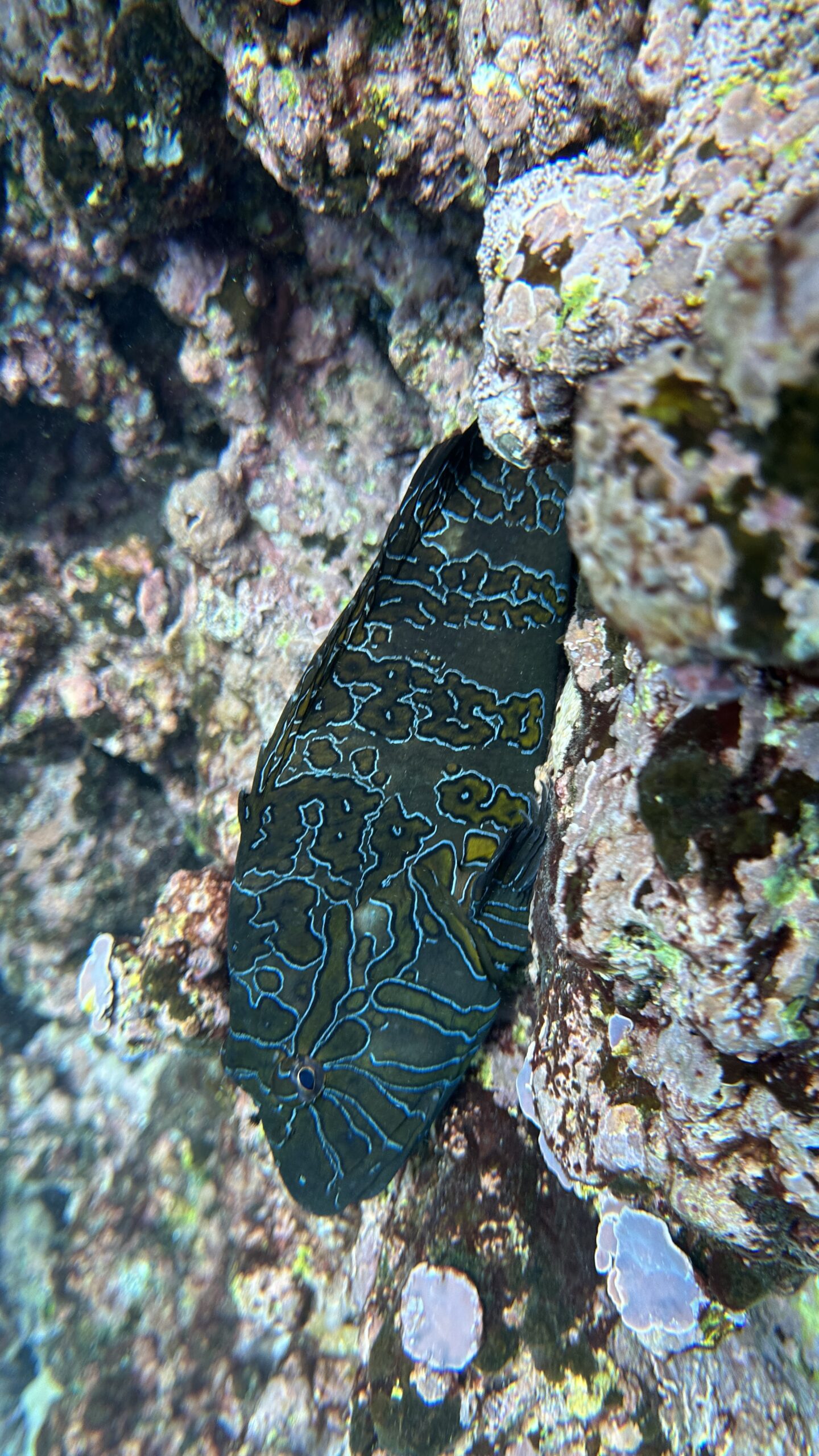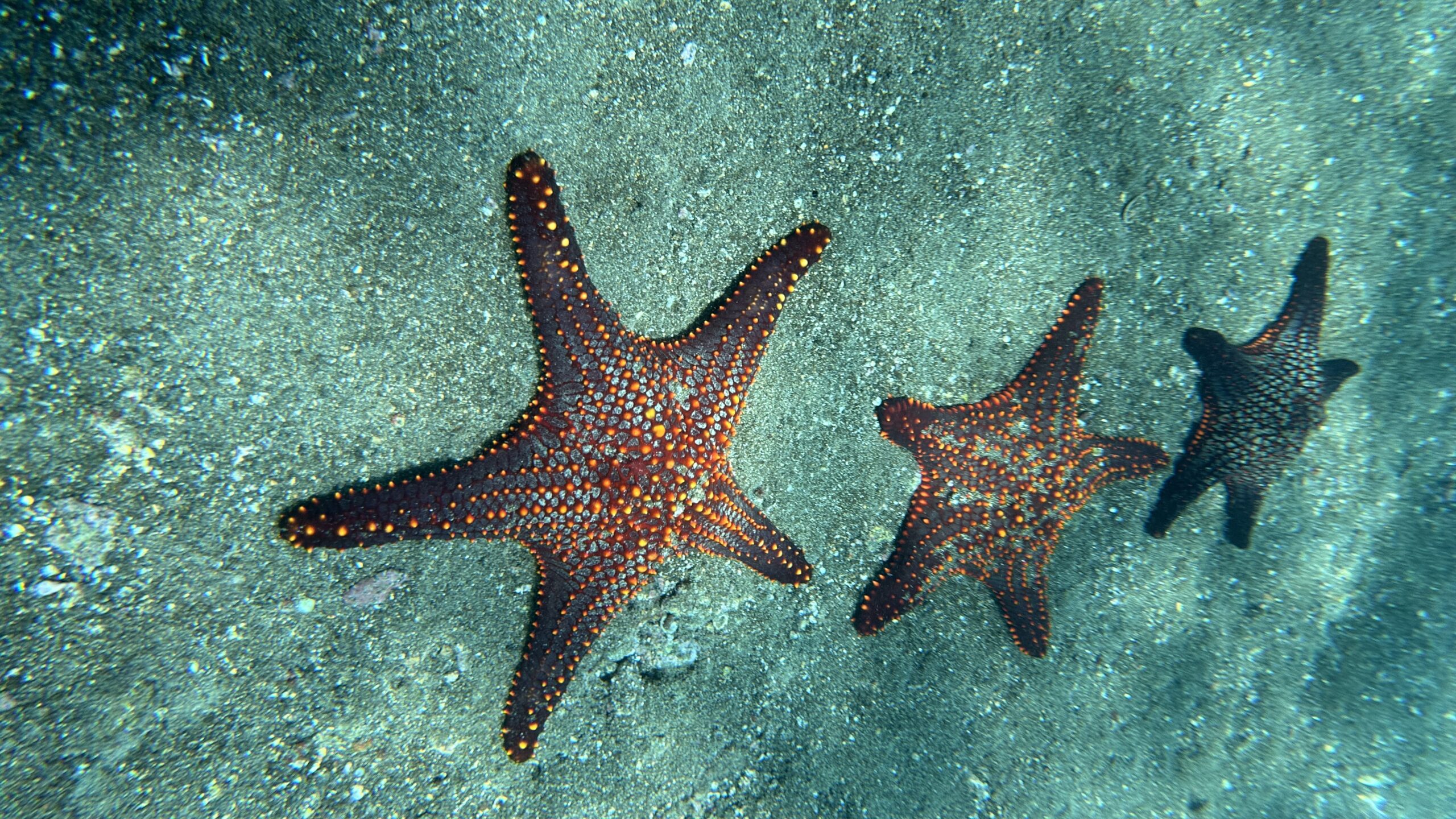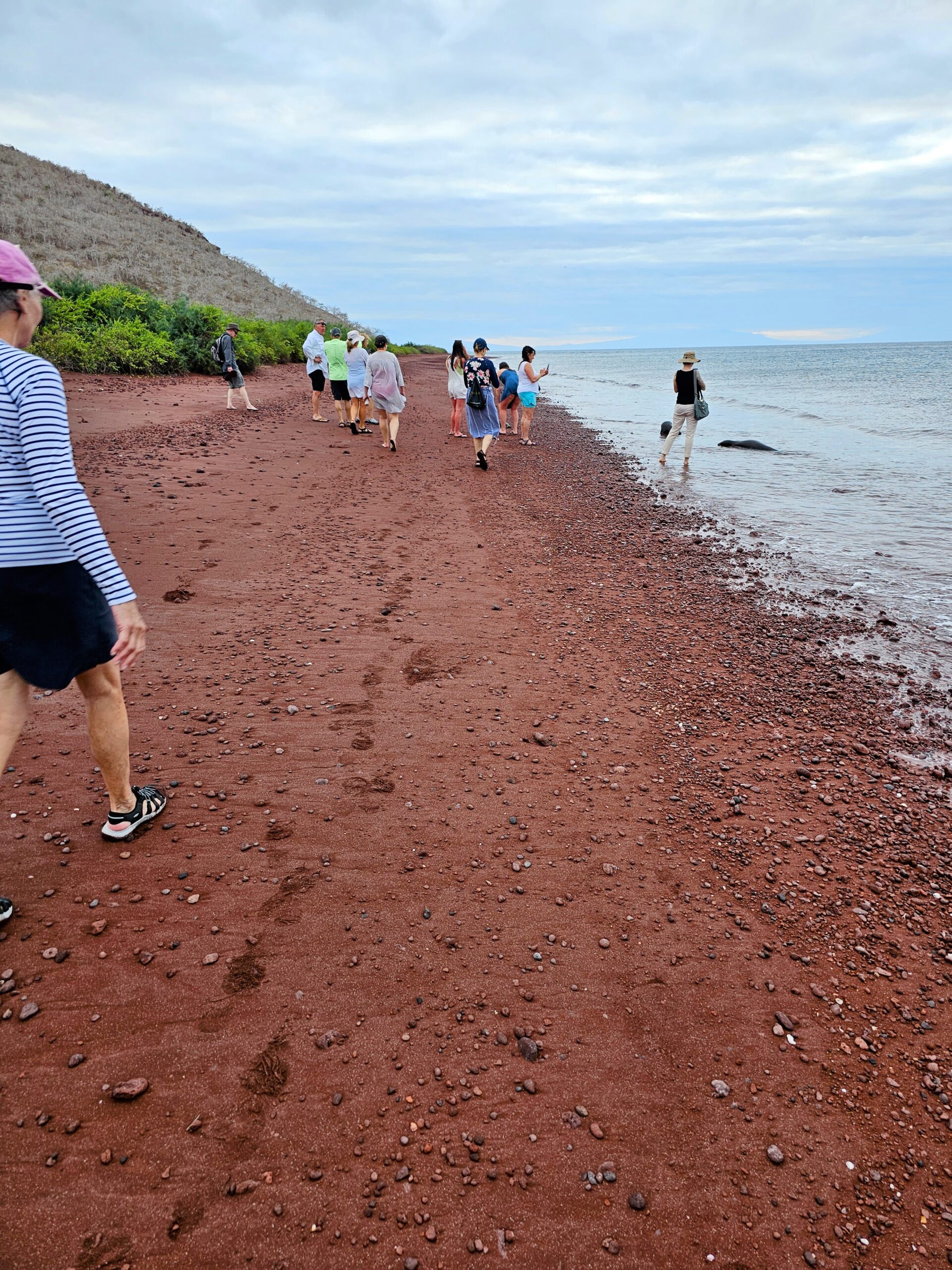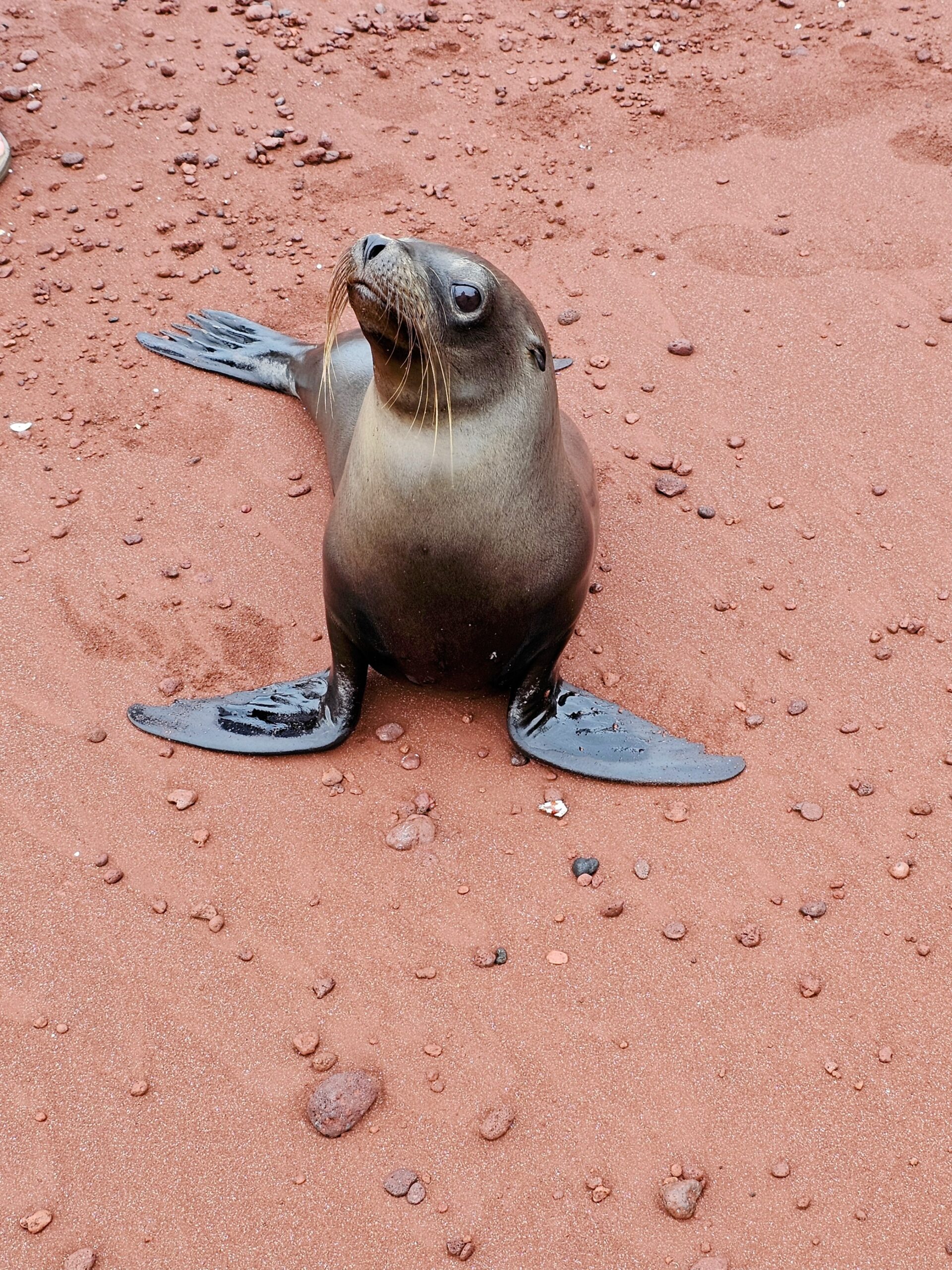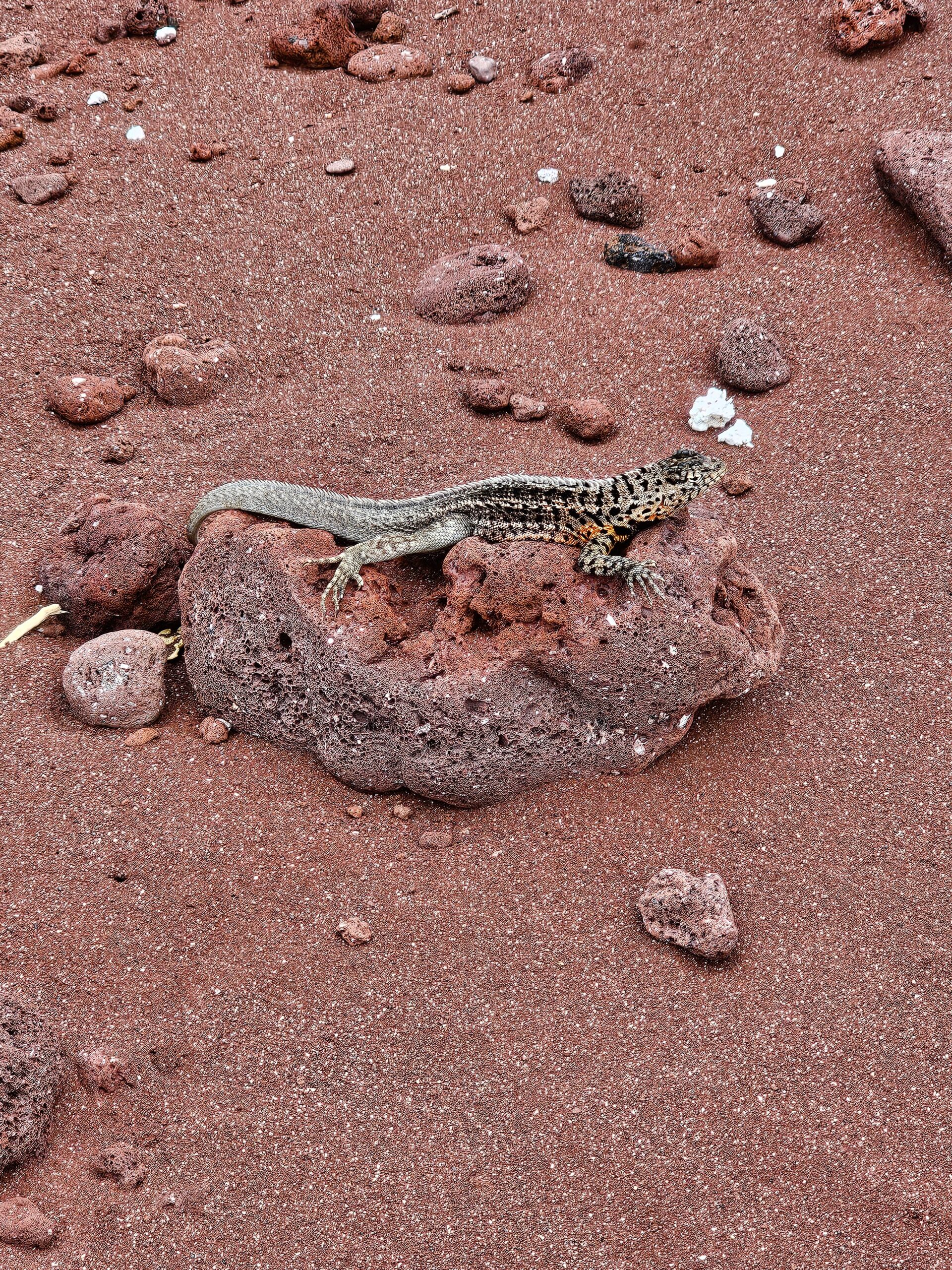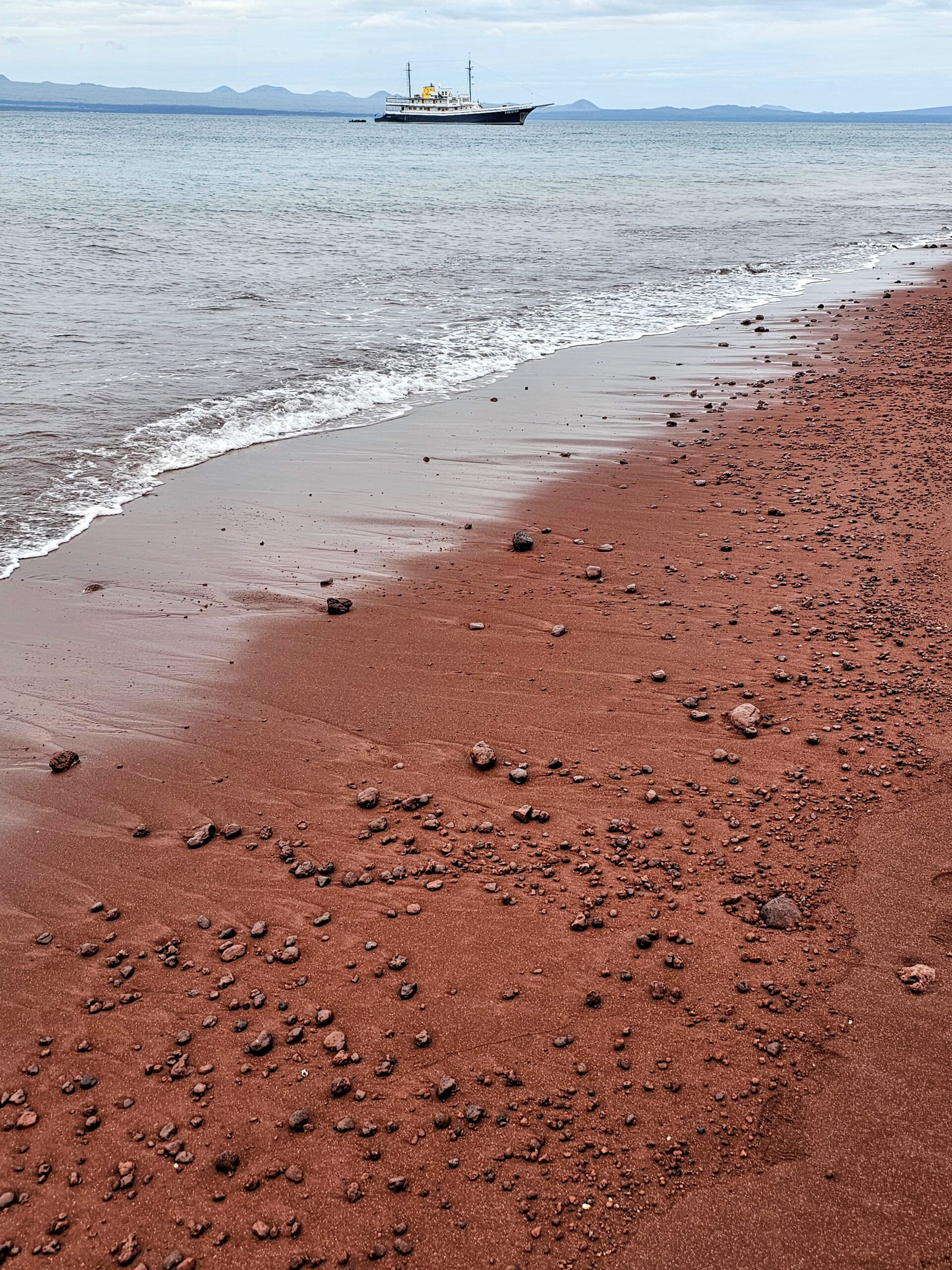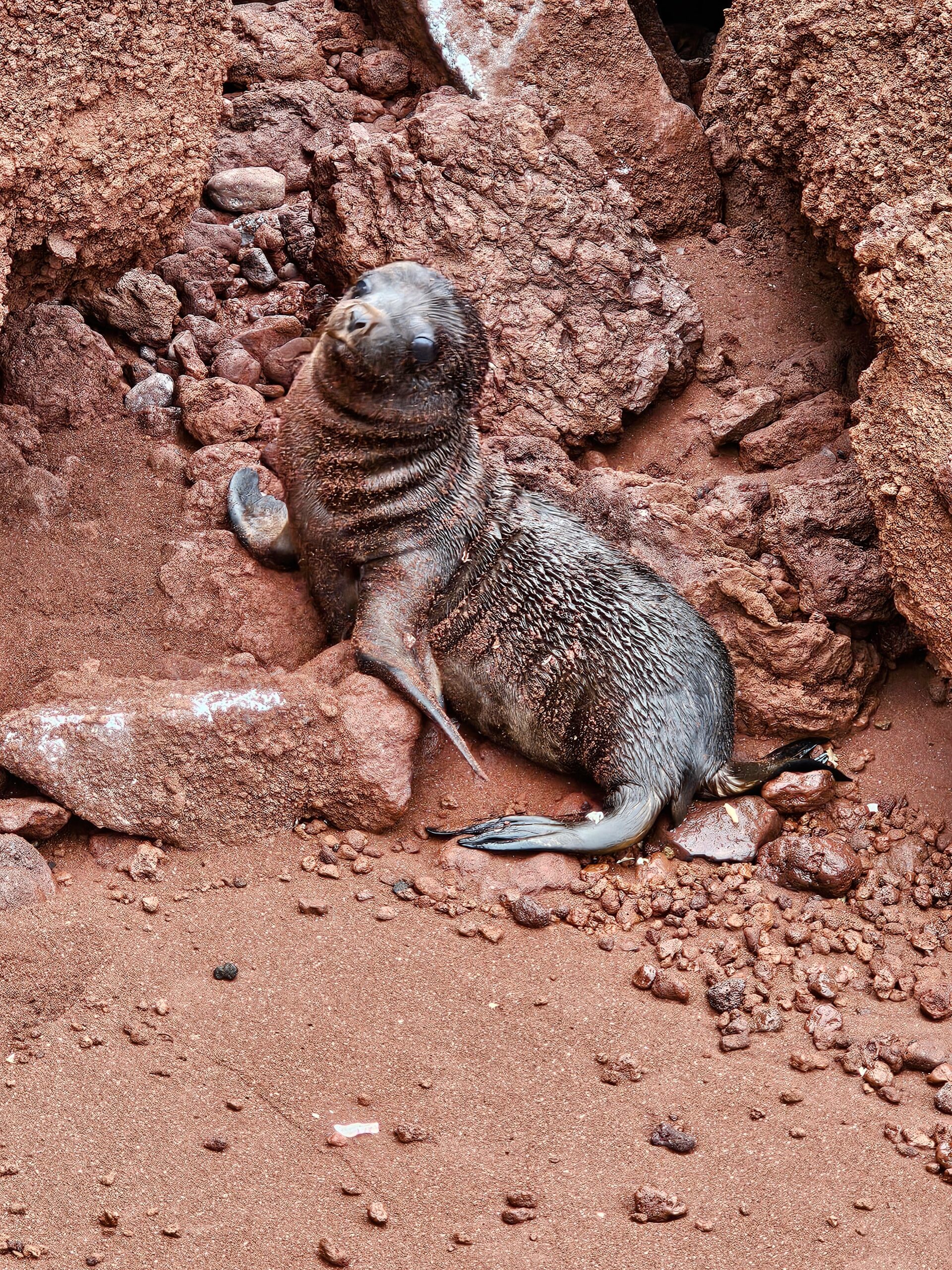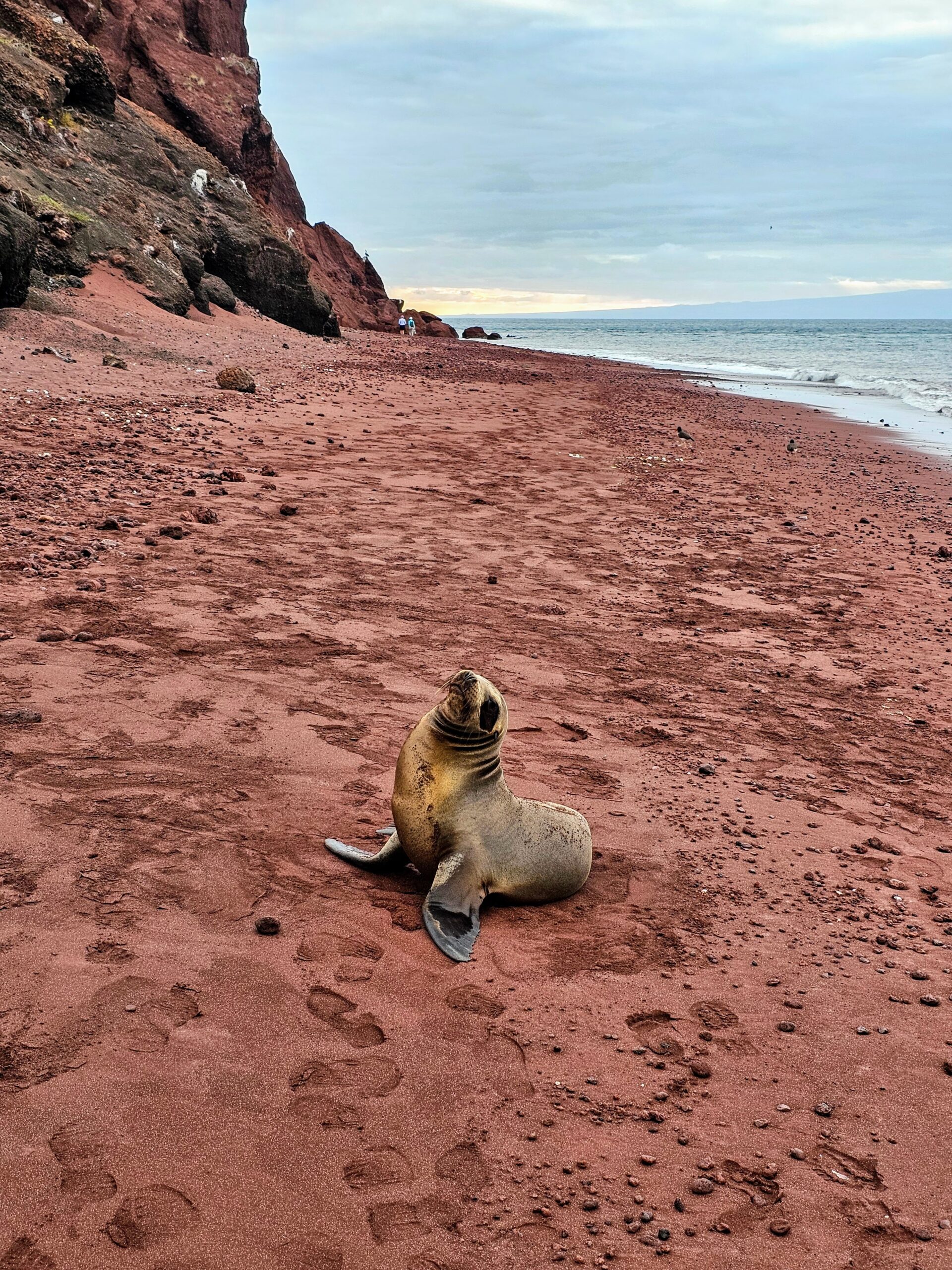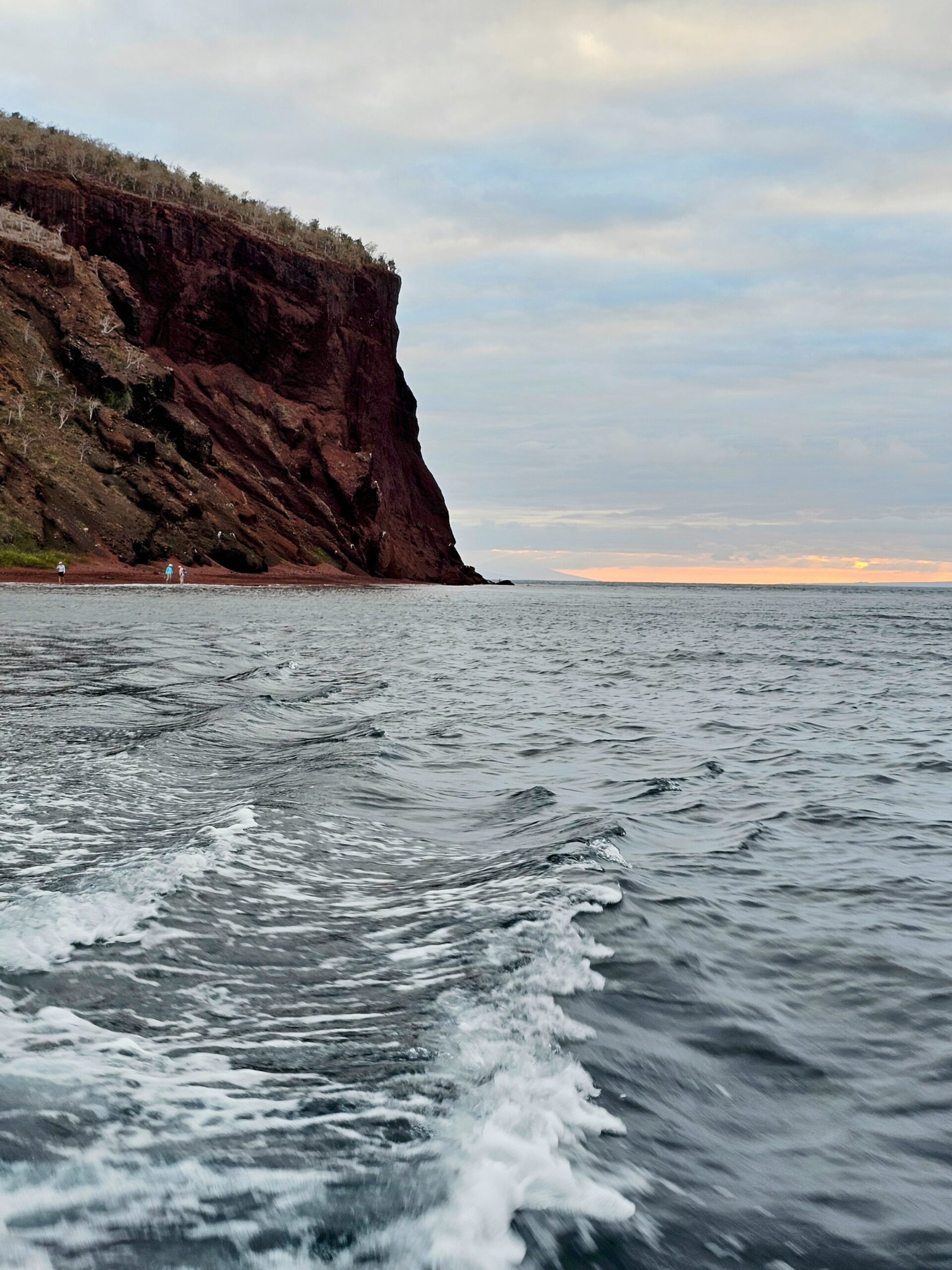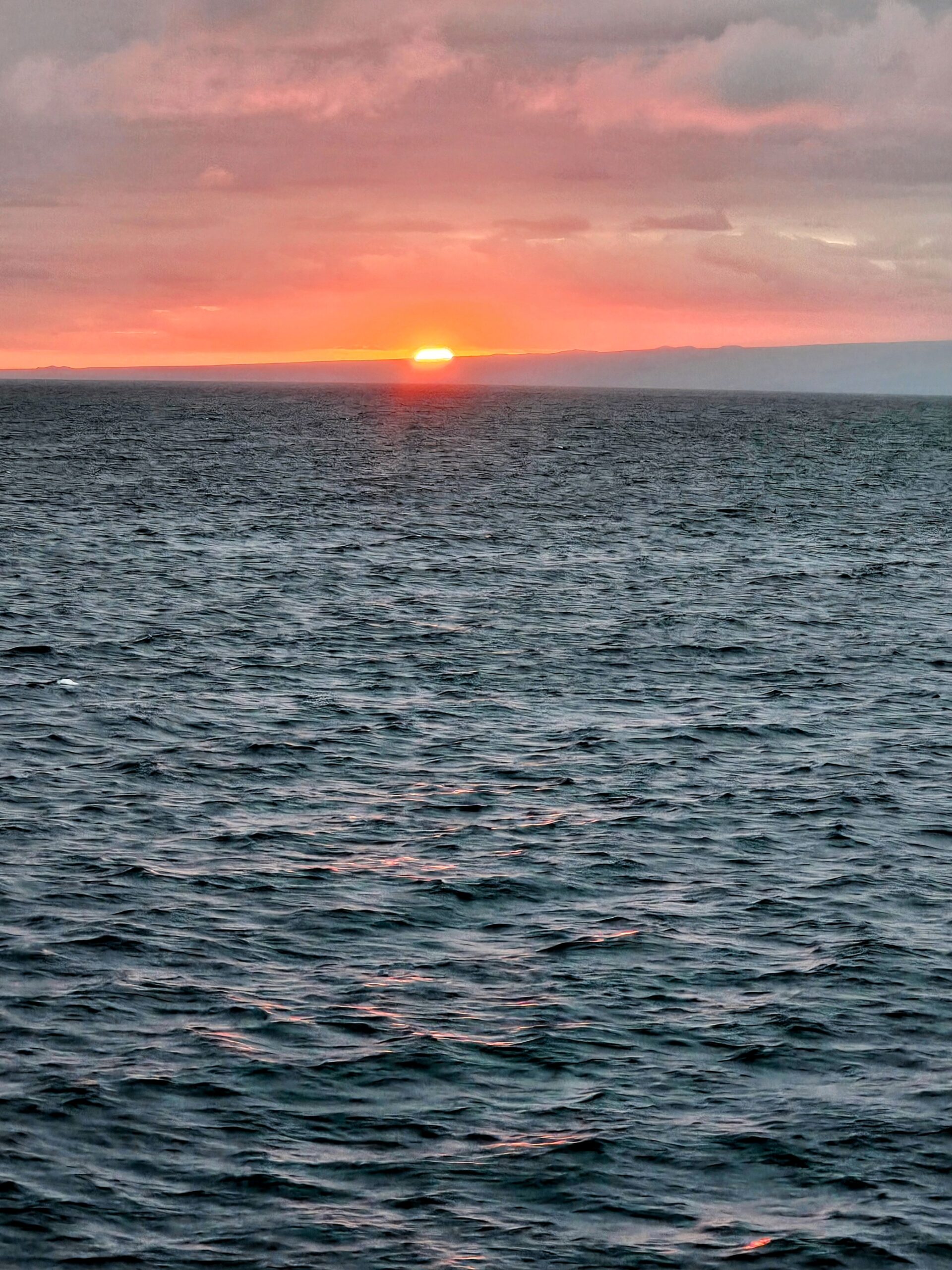This morning we made our way back to Santa Cruz Island, the location of our first excursion in the mangroves back on Day 1. Seems like a lot more than 4 days ago! We landed on Bachas Beach on the hunt for Flamingos, but the first brackish lake we walked to had none, but we did see this Hudsonian Whimbrel (left) and a Black Winged Stilt (the other left).
We then walked down the beach towards another possible spot for Flamingos, and came across a whole mess of Pelicans fishing in the surf. You can see other birds chasing after them in hopes of catching a free meal.
This little guy was sitting it out, but he was keeping an eye on me.
A little further up the beach we ran into this perfectly posed Marine Iguana.
So we had to create yet another Christmas Card photo (#5). We are set for awhile!
We rounded a corner on the beach and saw this Great Blue Heron hanging out. There is just so much variation in wildlife here!
Have posted enough Marine Iguana photos?? Survey says “yes”, but I loved the marine environment in the background too much to skip posting this one.
There are two brackish water lakes behind Bachas Beach, and the second one had flamingos! This brackish water supports very small shrimp which flamingos crave, and which gives their plumage that distinctive color.
Back on the beach there were numerous sea lions. They are so friendly you can get pretty darn close to them. This baby sea lion did slip away shortly after I took the photo.
We passed Daphne Major and Daphne Minor on our way to our next stop, the tiny Rabida Island.
After lunch we arrived at Rabida Island and had another snorkeling adventure where we saw some sea turtles feeding on the bottom (all underwater photos and videos are courtesy of our naturalist Diego).
You could watch the sea turtles eating the algae right off the rocks.
We saw quite a few of these Hieroglyphic Hawkfish, mostly trying to hide in the shadows. A very cool looking fish!
These sea stars seemed to be all over in the deeper areas away from the rocks.
Following the snorkeling we quickly got our of our wetsuits and jumped on pangas to head to the beach. Rabida Island is very small at only 1.9 square miles. It provides another opportunity to see flamingos, but it’s also unusual in that the island is composed of volcanic rock rich in oxidized iron that makes the sand on the beach red.
There is a large sea lion colony on the island. This little guy was very inquisitive.
He seemed perfectly content with Kim standing so close to him.
The lava lizards are seemingly on every island in the Galapagos, as we’ve seen them everywhere.
The Evolution looks even better with a foreground of red sand…or is it just me?
At the far end of the red beach we came across this sea lion, one of the youngest we have seen so far. It was my contention that this was a “fur sea lion” based on the appearance, but Diego, our naturalist, said it was just a regular sea lion. I still think it’s a fur sea lion, as none of the other little ones have this fur-like appearance.
This guy actually got up off his ass and posed for me, so I had to take one more shot down the beach.
A final photo of Rabida Island as we were riding the panga back to Evolution.
Yet another beautiful sunset, in a place that never seems to run out of them.
Up next, we pull into Puerto Ayora on Santa Cruz Island so we can visit the Darwin Research Station and a spot in the “cloud forest” to see more Giant Tortoises.

